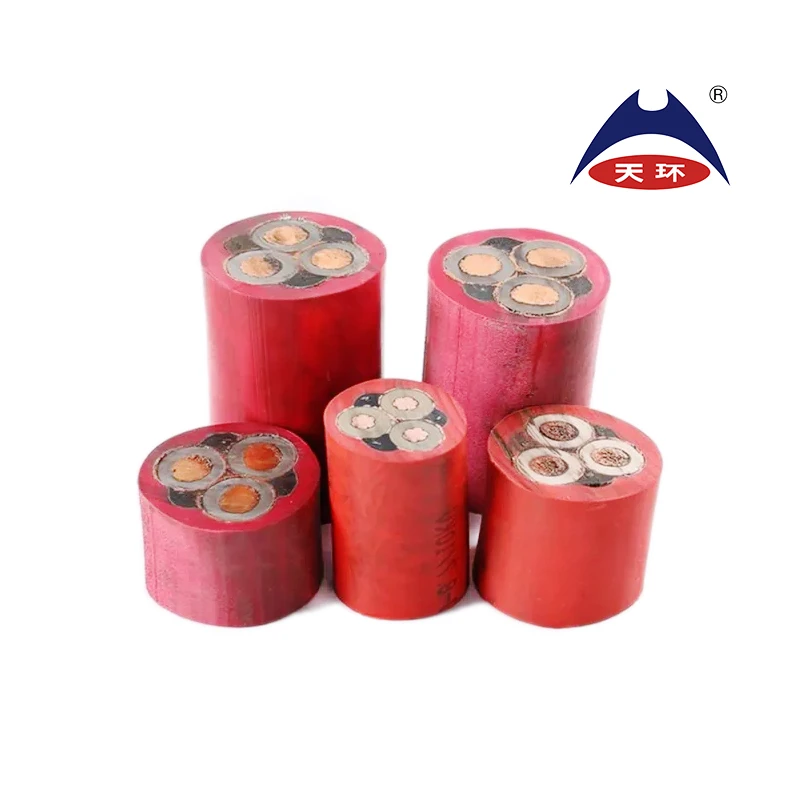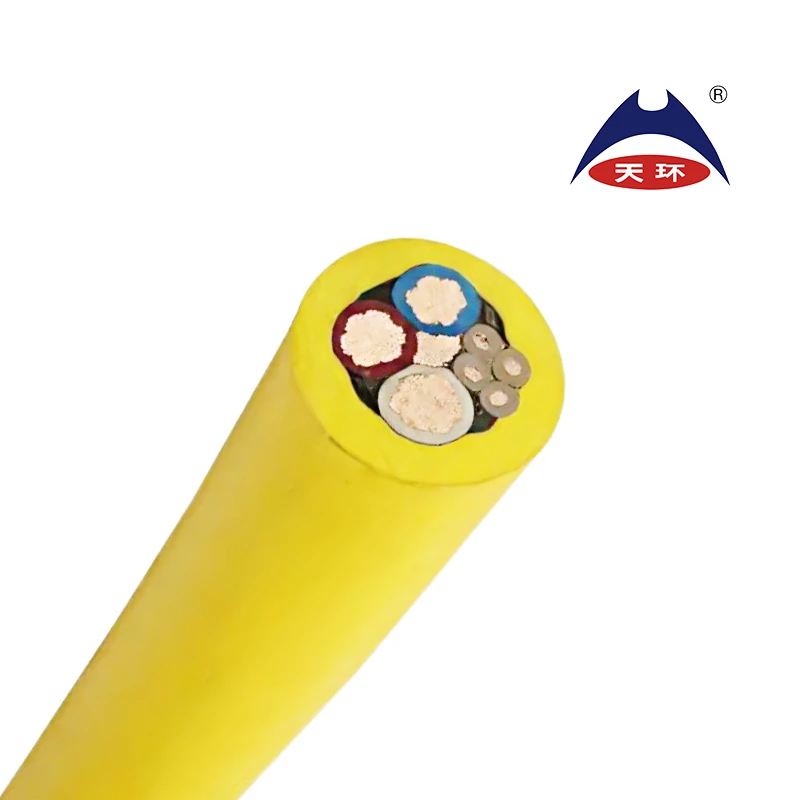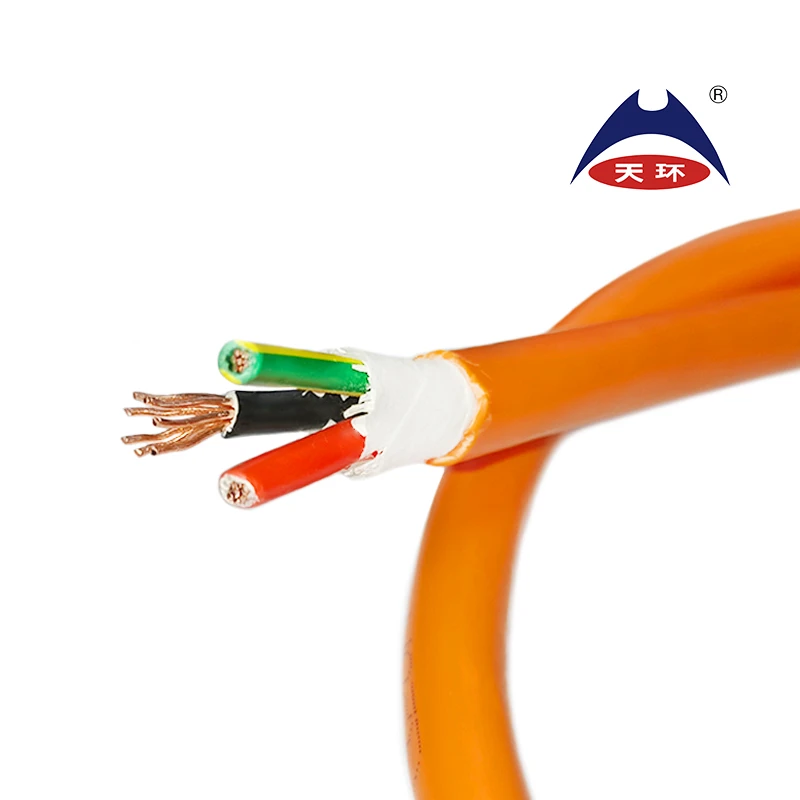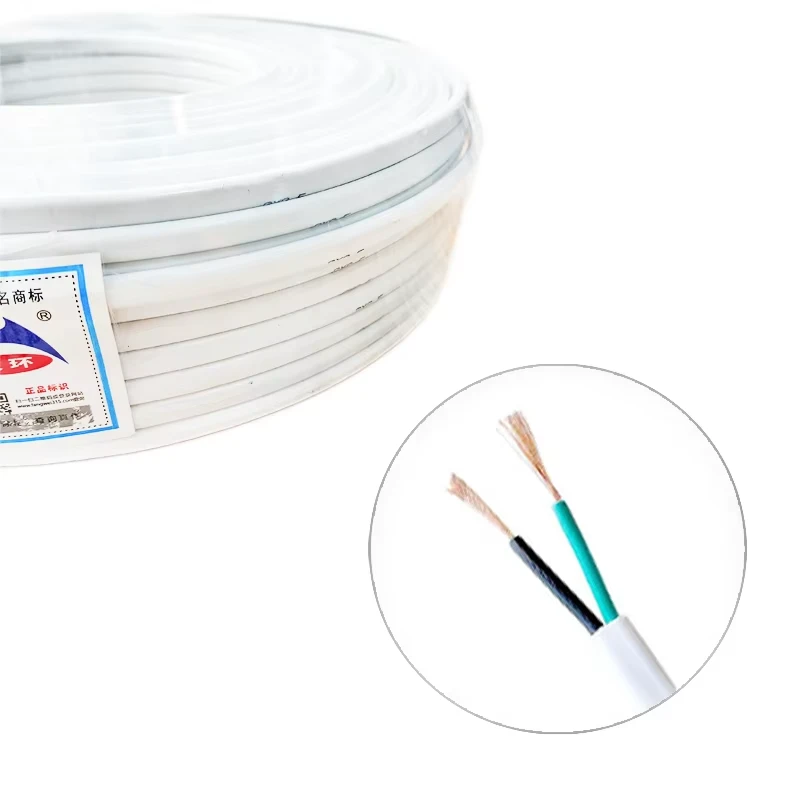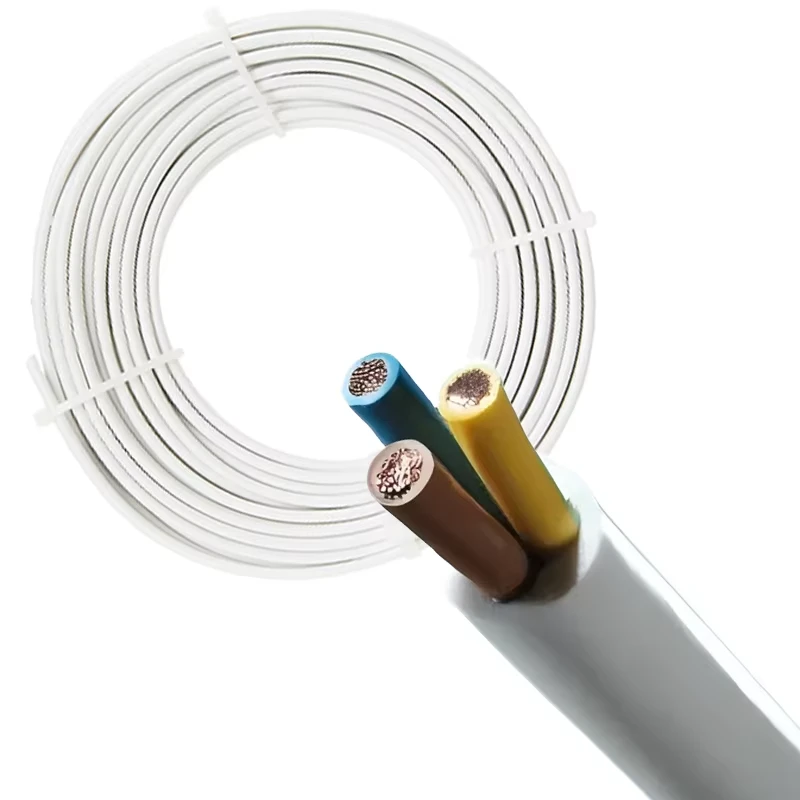
Wholesale MICC Pyro Cable & Wire | Factory Direct Quotes
Navigating the Landscape of Wholesale MICC Pyro Cables: Trends and Innovations
In an era defined by stringent safety regulations and an increasing demand for resilient infrastructure, the market for wholesale micc pyro cables is experiencing significant growth. Mineral Insulated Copper Clad (MICC) cables, often referred to as 'pyro' cables due to their exceptional fire resistance, represent a critical component in ensuring operational continuity and personnel safety across a multitude of high-stakes environments. Current industry trends highlight a sustained focus on enhanced fire performance, electromagnetic interference (EMI) shielding capabilities, and a broader adoption in smart building technologies and critical power distribution systems. As industries like oil and gas, petrochemicals, power generation, and transportation infrastructure continue to expand and modernize, the inherent properties of MICC cables—such as their ability to withstand extreme temperatures, maintain circuit integrity during fire events, and resist corrosion—make them an indispensable choice. The escalating global awareness of fire safety, coupled with evolving international standards like IEC 60702 and BS EN 60702, further propels the demand for high-quality wholesale micc pyro solutions. Manufacturers are continually innovating, exploring new sheath materials for specific corrosive environments and developing more compact designs to facilitate easier installation in confined spaces, addressing the multifaceted challenges faced by engineering professionals and procurement managers seeking reliable, long-term cabling solutions.
The demand for robust electrical infrastructure capable of enduring adverse conditions is driving continuous advancements in wholesale micc pyro cable technology. Modern mineral insulated cables are not merely about fire resistance; they embody a comprehensive solution for critical circuits requiring unwavering performance under stress. The shift towards sustainable practices also impacts the production, with a focus on environmentally friendly manufacturing processes and recyclable materials for components. Furthermore, the integration of advanced diagnostic tools for cable health monitoring is an emerging trend, allowing for predictive maintenance and enhanced system reliability, particularly in large-scale industrial complexes. This proactive approach minimizes downtime and reduces operational risks, a crucial factor for industries where uninterrupted service is paramount. The increasing complexity of industrial control systems and data centers also necessitates cables with superior data integrity, making MICC cables an ideal choice due to their inherent EMI immunity. The global supply chain for wholesale micc pyro products is becoming more sophisticated, with emphasis on traceability, certification, and consistent quality control from raw material sourcing to final product delivery. This ensures that every segment of the industry, from initial design to long-term operation, benefits from a reliable and high-performance cabling foundation.
The Engineering Excellence Behind MICC Cables: A Detailed Manufacturing Process
The production of `0.6/1kV FIRE RESISTANT MICC MI MINERAL INSULATED CABLE` involves a sophisticated series of processes, ensuring its unparalleled durability and fire resistance. The core of any MICC cable begins with high-purity copper conductors, which are meticulously selected for their excellent electrical conductivity. These conductors are then precisely positioned within a seamless copper or alloy tube. The critical insulation component is the magnesium oxide (MgO) powder, which serves as an inorganic dielectric. This powder is carefully compacted around the conductors within the metal sheath. The manufacturing process, often carried out by a specialized micc cable factory, includes a series of drawing and annealing stages. The drawing process progressively reduces the cable's diameter, simultaneously compressing the MgO powder to a highly dense, non-hygroscopic state, ensuring optimal insulation properties and preventing moisture ingress. Intermittent annealing, a heat treatment process, is crucial to restore the copper's ductility after each drawing stage, preventing brittleness and allowing for further reduction. This meticulous control over density and purity of the MgO insulation is paramount, as it directly impacts the cable's dielectric strength and its ability to withstand extreme temperatures without compromising electrical integrity. The overall robustness of the cable is further enhanced by its seamless metal sheath, providing mechanical protection and an effective barrier against water, chemicals, and corrosive environments.
Following the drawing and annealing stages, the cable undergoes rigorous testing to meet stringent international standards such as ISO 9001 for quality management systems and IEC 60702 for mineral insulated cables. Key tests include insulation resistance, high voltage breakdown, circuit integrity under fire conditions, and flame propagation resistance. For example, the cable must demonstrate its ability to maintain circuit integrity for a specified duration (e.g., 3 hours at 950°C) as per standards like BS 6387 Cat. CWZ or IEC 60331. The typical lifespan of a properly installed MICC cable can extend beyond 60 years, significantly outperforming conventional polymer-insulated cables. This exceptional longevity, combined with its inherent resistance to fire, explosion, and radiation, makes it ideal for critical applications in industries such as petrochemical plants, metallurgy facilities, nuclear power stations, and public safety systems like emergency lighting and fire alarm circuits in commercial buildings. In applications like wastewater treatment plants, the corrosion resistance of the copper sheath, or an optional specialized outer polymer sheath, ensures long-term reliability in aggressive chemical environments. Furthermore, the high current carrying capacity and excellent heat dissipation properties contribute to energy efficiency, reducing resistive losses over long runs compared to cables with organic insulation, which are limited by lower operating temperatures. The inherent EMI shielding provided by the continuous metal sheath is also a significant advantage, protecting sensitive control signals from external electrical noise, which is vital in complex industrial automation and data acquisition systems.
Visual Representation: Schematic Diagram of MICC Cable Manufacturing Process, highlighting key stages like conductor insertion, MgO filling, drawing, annealing, and final testing.
Technical Specifications and Performance Metrics of MICC Cables
Understanding the precise technical parameters is crucial for engineers and procurement specialists when considering wholesale micc pyro solutions. The 0.6/1kV FIRE RESISTANT MICC MI MINERAL INSULATED CABLE offers superior electrical performance coupled with extraordinary resilience. Its rated voltage of 0.6/1kV signifies its suitability for low to medium voltage applications, encompassing power distribution, control circuits, and safety systems. The conductors, typically made of high-conductivity copper, can be solid or stranded depending on the application and current carrying capacity requirements, ranging from small cross-sections for instrumentation to larger ones for power feeds. The Magnesium Oxide (MgO) insulation is key to its thermal stability, allowing continuous operation at conductor temperatures up to 250°C for standard designs, and even higher for specialized versions, far exceeding the limits of organic insulations. This high-temperature rating is particularly vital in environments where ambient temperatures are elevated or where power dissipation leads to significant thermal loads. Furthermore, the inorganic nature of MgO means it does not produce smoke, toxic gases, or flaming droplets when exposed to fire, addressing critical safety concerns in occupied buildings and confined spaces. The outer sheath, commonly copper, provides excellent mechanical protection, acts as a continuous earth return path, and offers superior EMI shielding, making it ideal for sensitive electronic circuits where signal integrity is paramount.
Beyond its standard electrical properties, the resistance of the wholesale micc pyro cable to various environmental factors is a significant advantage. It is inherently resistant to water, oils, and a wide range of chemicals due to its compact construction and robust metallic sheath, making it suitable for wet or chemically aggressive industrial settings. Its non-ageing characteristics mean its electrical properties do not degrade over time, ensuring consistent performance throughout its extended operational lifespan. This contributes to lower lifecycle costs and reduced maintenance compared to conventional cables that might require periodic replacement due to degradation. The compact diameter of MICC cables, relative to their current carrying capacity and fire resistance, also simplifies installation in congested cable trays and conduits. This advantage is particularly beneficial in retrofit projects or in new constructions where space optimization is critical. The robust construction allows for direct burial without additional protection in many soil conditions, provided appropriate external sheathing is applied for specific corrosive soils. These technical attributes make MICC cables not just a fire-resistant option but a comprehensive, durable, and reliable cabling solution for mission-critical applications where safety, performance, and longevity cannot be compromised.
| Parameter | Value / Standard |
|---|---|
| Rated Voltage (Uo/U) | 0.6/1 kV |
| Conductor Material | High Purity Copper (99.9% min.) |
| Insulation Material | Compressed Magnesium Oxide (MgO) |
| Sheath Material | Copper (or optional alloys like Bronze, Stainless Steel) |
| Operating Temperature Range | -40°C to +250°C (Continuous); up to 1000°C (Short-term during fire) |
| Fire Resistance Standard | IEC 60331, BS 6387 (Cat. CWZ), EN 50200 |
| Smoke & Halogen Emission | Zero Smoke, Zero Halogen (LSZH properties inherent) |
| Corrosion Resistance | Excellent (with appropriate outer sheath) |
| EMI Shielding | Superior (due to continuous metal sheath) |
Application Scenarios & Case Studies: The Versatility of MICC Pyro Cables
The robust characteristics of wholesale micc pyro cable make it indispensable across a vast array of critical applications where fire safety, mechanical strength, and environmental resilience are paramount. In petrochemical refineries and offshore platforms, for instance, MICC cables are routinely specified for emergency shutdown systems, fire pump circuits, and critical control instrumentation, where the presence of flammable materials demands the highest level of circuit integrity during a fire event. Their resistance to hydrocarbon fires and corrosive atmospheres ensures uninterrupted operation under the most severe conditions. Similarly, in nuclear power plants, these cables are vital for reactor control systems, emergency lighting, and safety systems, benefiting from their radiation resistance and longevity. The absence of organic materials in MICC cables prevents the emission of toxic fumes or smoke, which is a critical safety factor in hospitals, tunnels, and high-rise commercial buildings, making them the preferred choice for smoke extraction systems, emergency public address systems, and fire alarm circuits. A notable case study involved a major international airport where the upgrade of their integrated fire detection and suppression system required cables with absolute circuit integrity for up to 3 hours at 950°C. The adoption of wholesale micc pyro cables ensured compliance with strict aviation safety standards and guaranteed uninterrupted power and communication to critical safety equipment, even during prolonged fire incidents, mitigating potential catastrophic failures and safeguarding thousands of lives.
Beyond traditional industrial and commercial applications, wholesale micc pyro cable is increasingly utilized in modern infrastructure projects such as intelligent transportation systems and smart city deployments. For example, in subway tunnels and railway systems, MICC cables are deployed for signal systems, emergency lighting, and ventilation controls due to their inherent resistance to vibration, impact, and fire. The continuous metallic sheath also provides an effective barrier against rodent damage, a common problem in underground installations. In smart buildings, the EMI shielding capabilities of MICC cables ensure reliable data transmission for sophisticated building management systems and security networks, preventing interference from adjacent power cables or external electromagnetic sources. The stability and longevity of these cables also contribute to reduced maintenance costs over the lifecycle of the building. Another compelling example comes from a large-scale data center project, where the extremely high-density server racks and critical power distribution units necessitated cabling that could not only withstand elevated ambient temperatures but also guarantee no downtime. An oem micc wire solution was tailored to their specific rack configurations, providing power to servers while ensuring absolute circuit integrity during any thermal event, protecting invaluable data and ensuring business continuity. This demonstrates the versatility and adaptability of MICC cables to meet the unique and demanding requirements of contemporary technological infrastructure.
Visual Representation: Depiction of MICC cables installed in petrochemical plants, high-rise buildings, and underground tunnels.
Choosing the Right Partner: Manufacturer Comparison and Customization Solutions
When sourcing wholesale micc pyro cables, selecting the right manufacturer is as crucial as understanding the product itself. The market features several reputable micc cable factory options, each with unique strengths in terms of product range, certification, and service capabilities. Key differentiators include a manufacturer's adherence to international standards like ISO 9001 for quality management, ISO 14001 for environmental management, and OHSAS 18001 for occupational health and safety. Furthermore, reputable suppliers should provide comprehensive product certifications from independent testing bodies such as BASEC, UL, LPCB, or VDE, confirming compliance with specific fire safety and electrical performance standards. Experience also plays a significant role; companies with decades of experience in producing china micc wire or global distribution typically have refined manufacturing processes, superior quality control, and a deeper understanding of diverse application requirements. Evaluating a manufacturer's production capacity and lead times is also essential for large-scale projects to ensure timely delivery and avoid costly delays. A robust technical support team, capable of assisting with cable selection, installation guidelines, and post-sales inquiries, adds substantial value, ensuring seamless project execution from initial design to commissioning.
Many projects necessitate a tailored approach, making the availability of oem micc wire and customization solutions a key criterion for selection. Customization can involve specific sheath materials (e.g., stainless steel for highly corrosive environments, copper-nickel alloys for saltwater exposure), variations in conductor configurations (e.g., specialized multi-core designs, composite cables integrating power and signal lines), or bespoke lengths and coil sizes to minimize waste and streamline installation. A flexible micc cable factory should be able to provide detailed micc wire quotes based on these specific requirements, offering competitive pricing while maintaining high quality standards. For instance, a client recently required MICC cables with a unique external sheathing compound to resist specific acidic chemicals present in their industrial facility's wastewater treatment section. The chosen manufacturer, through their OEM capabilities, developed and tested a custom sheathing solution that provided enhanced chemical resistance, significantly extending the cable's operational life in that challenging environment, demonstrating the value of a collaborative and adaptable manufacturing partner. Transparent communication regarding delivery schedules, minimum order quantities, and potential lead times for custom orders is also vital for effective project planning and execution.
| Feature | Standard 0.6/1kV MICC | Custom OEM MICC Solution |
|---|---|---|
| Conductor Material | Copper | Copper, Nickel-plated Copper, Cupronickel (for higher temp/corrosion) |
| Sheath Material | Copper | Copper, Bronze, Stainless Steel, Inconel, Monel |
| Outer Jacket | Optional LSZH PVC, PE | Custom compounds (e.g., Chlorosulfonated Polyethylene - CSPE, Fluoropolymer) for specific chemical, UV, or abrasion resistance |
| Core Configuration | 1, 2, 3, 4, 7 cores (standard sizes) | Up to 19 cores, Composite (Power + Signal), Thermocouple extension |
| Application Focus | General Fire Alarm, Emergency Lighting, Critical Power | Extreme Temperature, Highly Corrosive, High Vibration, Specific Radiation Environments |
| Certifications | IEC 60702, BS 6387, EN 50200 | Additional client-specific tests, NEMA, UL, CSA, ATEX for hazardous locations |
Ensuring Reliability: Trustworthiness, Support, and Warranty for MICC Wire Products
Building trust with B2B clients in the procurement of critical infrastructure components like micc wire product is paramount. A reliable supplier goes beyond merely providing the product; they offer a comprehensive support system that ensures peace of mind throughout the project lifecycle. This includes readily available technical documentation, installation guides, and detailed performance specifications, allowing engineers to integrate the cables seamlessly into their designs. For complex projects, dedicated technical support teams are invaluable, providing expert advice on cable sizing, routing, termination, and compliance with local and international electrical codes. Furthermore, transparency regarding delivery cycles is crucial. For standard wholesale micc pyro orders, established manufacturers typically maintain sufficient stock levels, allowing for lead times as short as 1-2 weeks for common configurations. However, for specialized or custom oem micc wire solutions, lead times may extend to 4-6 weeks, depending on the complexity of manufacturing and specific material sourcing requirements. A clear communication channel regarding order status and shipment tracking is vital for logistical planning.
A robust warranty commitment is a definitive mark of a manufacturer's confidence in their micc wire product quality and durability. Most reputable micc cable factory operations offer warranties typically ranging from 10 to 25 years against manufacturing defects, reflecting the exceptional longevity and reliability of mineral insulated cables. This long-term assurance significantly de-risks the investment for clients, especially in critical infrastructure where replacement costs and operational downtime can be prohibitive. Comprehensive customer support also extends to post-installation queries, troubleshooting assistance, and, if rarely needed, efficient handling of warranty claims. Ethical manufacturers also provide a clear and concise FAQ section, addressing common concerns regarding installation challenges, termination techniques, application specific questions, and maintenance requirements. For example, frequently asked questions might cover topics such as: "What is the maximum bending radius for MICC cables?", "How do MICC cables behave in extreme vibration environments?", or "What are the best practices for sealing MICC cable ends to prevent moisture ingress?". This proactive approach to client education and support reinforces trustworthiness and builds long-lasting partnerships, ensuring that clients receive not just a product, but a complete, reliable, and supported solution for their critical cabling needs.
Frequently Asked Questions (FAQ) about MICC Pyro Cables
Q: What makes MICC cable superior to standard fire-rated cables?
A: MICC cables utilize inorganic materials (copper, magnesium oxide), meaning they do not burn, produce smoke, or release toxic gases even when exposed to direct flames. Unlike polymer-insulated cables, their circuit integrity remains intact at extreme temperatures (up to 1000°C for hours), offering true fire resistance rather than just fire retardation. They are also inherently waterproof, explosion-proof, and rodent-proof due to their robust metallic sheath.
Q: Can MICC cables be installed outdoors or in wet environments?
A: Yes, the seamless metallic sheath of MICC cables provides excellent protection against water ingress and moisture. For corrosive outdoor or underground environments, an additional polymer outer sheath (e.g., LSZH PVC, PE) can be applied to provide enhanced chemical and UV resistance, ensuring long-term performance.
Q: What is the typical lead time for a large wholesale order of MICC cables?
A: For standard configurations of 0.6/1kV MICC cables, lead times generally range from 1 to 3 weeks, depending on order volume and current stock. For custom or specialized OEM orders, the lead time may extend to 4-6 weeks to accommodate specific material sourcing and manufacturing processes. It is always best to consult with the manufacturer for precise delivery schedules.
Authoritative References and Industry Standards
- International Electrotechnical Commission (IEC) 60702, Mineral Insulated Cables and their Terminations with a Rated Voltage Not Exceeding 750 V.
- British Standard (BS) 6387, Performance Requirements for Cables Required to Maintain Circuit Integrity Under Fire Conditions.
- European Standard (EN) 50200, Method for Test for Resistance to Fire of Unprotected Small Cables for Use in Emergency Circuits.
- International Organization for Standardization (ISO) 9001, Quality Management Systems - Requirements.
-
Reliable LIYCY Cable Solutions for Low and Medium Voltage ApplicationsNewsJul.14,2025
-
Premium Overhead Electrical Wire Solutions for Low and Medium Voltage ApplicationsNewsJul.14,2025
-
Innovative XLPE Electrical Cable Solutions for Modern Low and Medium Voltage NetworksNewsJul.14,2025
-
High-Quality Ethylene Propylene Rubber Cable – Durable EPDM Cable & 1.5 mm 3 Core OptionsNewsJul.14,2025
-
Exploring the Versatility of H1Z2Z2-K 1X4mm2 Cables in Modern ApplicationsNewsJul.14,2025
-
Uses of Construction WiresNewsJul.14,2025
-
Types of Neoprene CableNewsJul.14,2025





